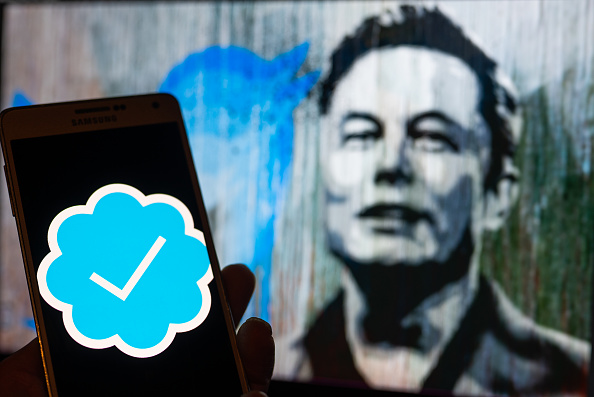Elon Musk Is No Longer the World’s Richest Person, Falls Behind Bernard Arnault
Tesla CEO trails the European mogul on the wealth rankings amid a slump in the car maker’s shares
Elon Musk is no longer the world’s richest person.
Mr. Musk, the Tesla Inc. chief executive and new owner of Twitter Inc., gave up the unofficial title Tuesday to European mogul Bernard Arnault for Earth’s wealthiest individual, according to Bloomberg, which publishes a ranking of the richest people in the world. A prolonged slump in Tesla’s stock has wiped out more than $100 billion of Mr. Musk’s net worth this year.
The net worth of Mr. Musk, who claimed bragging rights as the wealthiest person in January 2021, is valued at $163.1 billion as of Tuesday morning, according to Bloomberg. He now trails Mr. Arnault, the chairman and chief executive of luxury conglomerate LVMH Moët Hennessy Louis Vuitton, whose personal wealth is estimated at $170.6 billion.
Tesla didn’t respond to a request for comment. An LVMH spokesman declined to comment.
When Mr. Musk first reached the pinnacle of the Bloomberg Billionaires Index almost two years ago, he overtook Amazon.com Inc. founder Jeff Bezos, driven by a meteoric rise in the value of Tesla. The car maker’s shares have fallen sharply this year, though, amid concerns about demand. Mr. Bezos has also fallen in the wealth ranks and is now the fifth-richest person, largely reflecting a drop in Amazon’s stock amid recession fears. Mr. Bezos has said he plans to give away most of his fortune to charity.
For many executives and founders, their net worth is at least partially tied up in shares of their businesses. That means volatility in stocks and other holdings can sway their measures of wealth. Establishing their exact net worth can also be tricky, in part because many of their holdings are private.
Mr. Musk is compensated in stock awards as Tesla’s CEO and doesn’t accept a cash salary from the electric-car company. He has accumulated most of his wealth in recent years as Tesla has turned profitable.
Photos: Elon Musk Buys Twitter. Here’s How He Made His Fortune
In January 2020, Mr. Musk’s net worth was valued at about $28 billion, according to Bloomberg. As Tesla’s stock soared, so did Mr. Musk’s wealth, which peaked at $336 billion in November 2021. He has lost more on paper this year than any other billionaire, according to Bloomberg.
Mr. Musk, a serial entrepreneur, runs rocket company SpaceX, formally known as Space Exploration Technologies Corp. He also founded Boring Co., an underground tunnel business, and neuroscience startup Neuralink Corp. In October, Mr. Musk acquired Twitter for $44 billion. He has sold some Tesla stock this year at least in part to fund the Twitter deal, including selling $4 billion worth of shares last month.
It has been a rocky period for Twitter since Mr. Musk took ownership. He fired about half the staff, and the social-media company has seen waves of people leaving. It suffered “a massive drop in revenue” and was losing $4 million a day, he said soon after buying the business. Mr. Musk has said he aimed to make Twitter less dependent on advertising revenue that accounted for about 90% of sales, though efforts to introduce a paid subscription service have suffered repeated delays. He later said bankruptcy is a possibility for Twitter.
Mr. Arnault’s wealth, meanwhile, is largely tied up in the luxury empire LVMH.
A businessman from Northern France, Mr. Arnault bought the storied French fashion house Dior out of bankruptcy in the 1980s and then used it to amass a stake in LVMH. This shareholding structure remains in place today: the Arnaults own more than 97% of Dior, which in turn owns 41% of LVMH. The family also owns close to 7% of LVMH directly, with total voting rights of well above 50%.
Like some of his peers, Mr. Arnault went on a spending spree over the past three decades, allowing him to build economies of scale in advertising, shop leases and department-store space between his dozens of brands.
Ultimately, Mr. Arnault came out on top in a bruising race to become the biggest in the industry, earning the nickname “the wolf in cashmere” for the way he pursued acquisitions. LVMH’s wines-and-spirits division houses Dom Pérignon champagne and Hennessy cognac. Its fashion and leather goods unit includes brands like Loewe, Celine and Fendi, while the conglomerate also owns American jeweller Tiffany & Co. and watchmaker TAG Heuer.
Having gone on a tear since 2015, the luxury industry also has held up better than most this year. LVMH reported strong revenue in the most recent quarter as wealthy consumers continued to spend freely on luxury goods despite the uncertain economic backdrop.
Indian industrialist Gautam Adani is currently the third-richest person in the world, according to Bloomberg. Mr. Adani is the chairman of his namesake Adani Group, an India-based conglomerate involved in initiatives including green energy, power and gas distribution. His push into green energy comes as Indian Prime Minister Narendra Modi has stressed development for infrastructure and renewable energy. Shares of Mr. Adani’s publicly traded businesses have risen this year.
Mr. Adani is the first person from Asia who has ranked this high on Bloomberg’s wealth index, long dominated by U.S. tech entrepreneurs. Earlier this year he became a centibillionaire, with his net worth exceeding that of Warren Buffett.
 Copyright 2020, Dow Jones & Company, Inc. All Rights Reserved Worldwide. LEARN MORE
Copyright 2020, Dow Jones & Company, Inc. All Rights Reserved Worldwide. LEARN MORE
This stylish family home combines a classic palette and finishes with a flexible floorplan
Just 55 minutes from Sydney, make this your creative getaway located in the majestic Hawkesbury region.
Continued stagflation and cost of living pressures are causing couples to think twice about starting a family, new data has revealed, with long term impacts expected
Australia is in the midst of a ‘baby recession’ with preliminary estimates showing the number of births in 2023 fell by more than four percent to the lowest level since 2006, according to KPMG. The consultancy firm says this reflects the impact of cost-of-living pressures on the feasibility of younger Australians starting a family.
KPMG estimates that 289,100 babies were born in 2023. This compares to 300,684 babies in 2022 and 309,996 in 2021, according to the Australian Bureau of Statistics (ABS). KPMG urban economist Terry Rawnsley said weak economic growth often leads to a reduced number of births. In 2023, ABS data shows gross domestic product (GDP) fell to 1.5 percent. Despite the population growing by 2.5 percent in 2023, GDP on a per capita basis went into negative territory, down one percent over the 12 months.
“Birth rates provide insight into long-term population growth as well as the current confidence of Australian families,” said Mr Rawnsley. “We haven’t seen such a sharp drop in births in Australia since the period of economic stagflation in the 1970s, which coincided with the initial widespread adoption of the contraceptive pill.”
Mr Rawnsley said many Australian couples delayed starting a family while the pandemic played out in 2020. The number of births fell from 305,832 in 2019 to 294,369 in 2020. Then in 2021, strong employment and vast amounts of stimulus money, along with high household savings due to lockdowns, gave couples better financial means to have a baby. This led to a rebound in births.
However, the re-opening of the global economy in 2022 led to soaring inflation. By the start of 2023, the Australian consumer price index (CPI) had risen to its highest level since 1990 at 7.8 percent per annum. By that stage, the Reserve Bank had already commenced an aggressive rate-hiking strategy to fight inflation and had raised the cash rate every month between May and December 2022.
Five more rate hikes during 2023 put further pressure on couples with mortgages and put the brakes on family formation. “This combination of the pandemic and rapid economic changes explains the spike and subsequent sharp decline in birth rates we have observed over the past four years,” Mr Rawnsley said.
The impact of high costs of living on couples’ decision to have a baby is highlighted in births data for the capital cities. KPMG estimates there were 60,860 births in Sydney in 2023, down 8.6 percent from 2019. There were 56,270 births in Melbourne, down 7.3 percent. In Perth, there were 25,020 births, down 6 percent, while in Brisbane there were 30,250 births, down 4.3 percent. Canberra was the only capital city where there was no fall in the number of births in 2023 compared to 2019.
“CPI growth in Canberra has been slightly subdued compared to that in other major cities, and the economic outlook has remained strong,” Mr Rawnsley said. “This means families have not been hurting as much as those in other capital cities, and in turn, we’ve seen a stabilisation of births in the ACT.”
This stylish family home combines a classic palette and finishes with a flexible floorplan
Just 55 minutes from Sydney, make this your creative getaway located in the majestic Hawkesbury region.






















